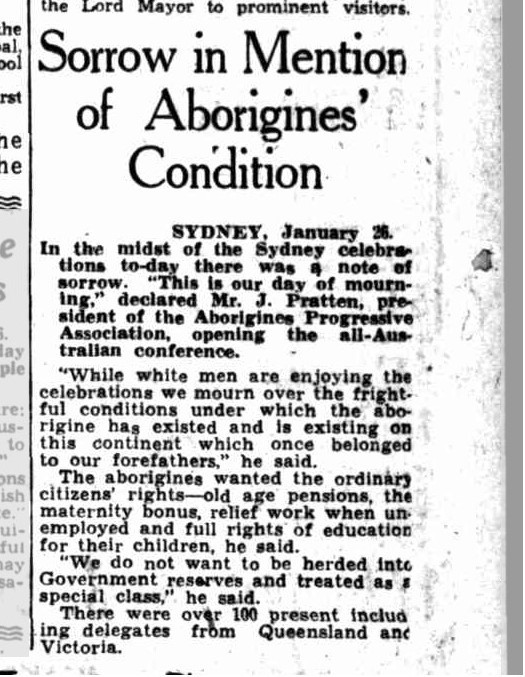January twenty-six
By Chrissi Theodosiou, Research Coordinator, Queensland Memory | 22 January 2021
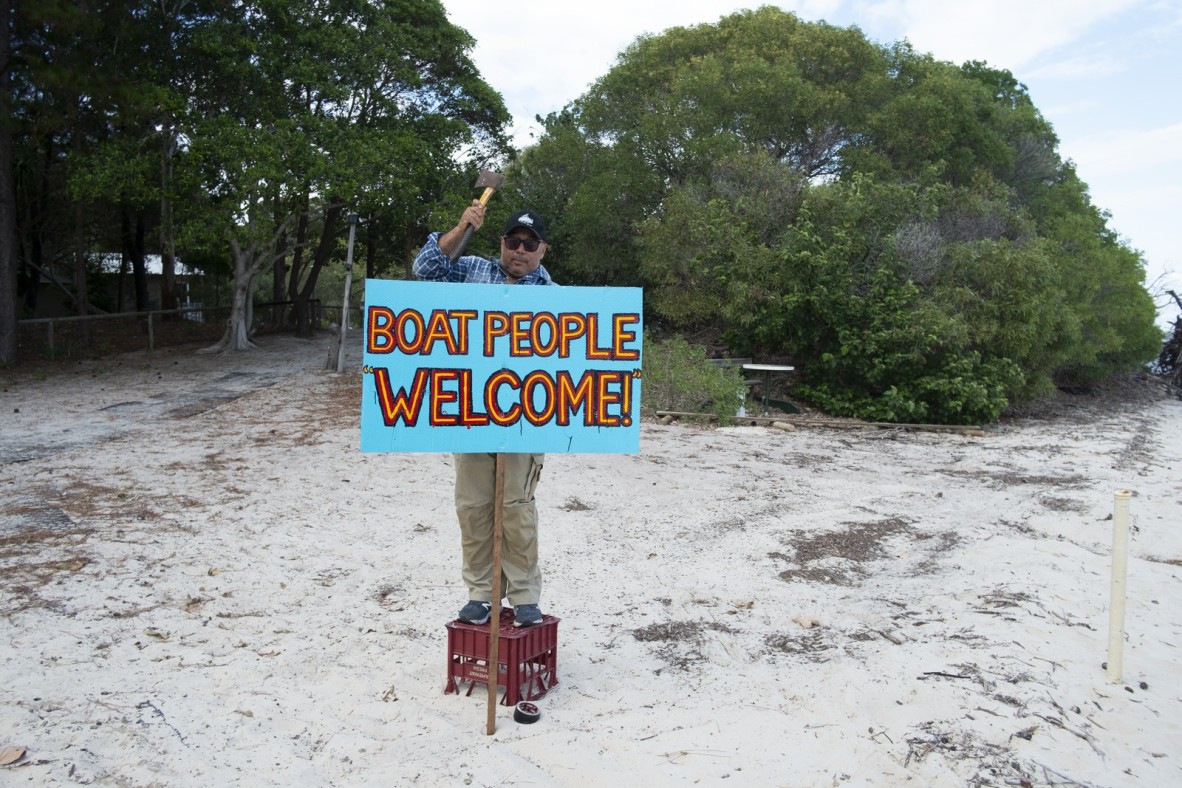
Gordon Hookey placing a sign reading 'Boat people welcome' in the sand in preparation for the arrival of industry representatives by boat, Gold Coast Indigenous Artist Camp, South Stradbroke Island, May 2019. 32493, Gordon Hookey portraits, Image number 32493-0001-0002, John Oxley Library, State Library of Queensland.
Australia Day, also known as Anniversary Day, Foundation Day, ANA Day, Invasion Day, National Day of Mourning and Survival Day, has had and continues to have many different ‘personas.’ As a memory institution State Library of Queensland provides access to documents and other evidence of what Australia Day was, is and perhaps may become, in Queensland.
The decision to mark the occasion of the First Fleet’s arrival in 1788 at Sydney Cove and Captain Arthur Phillip’s proclamation of British sovereignty over the eastern continent on January 26, was made by the Australian Natives Association (ANA), a group of white ‘native-born’ middle class men formed in Victoria in the late 1800s.
Early Queensland newspapers do not illuminate much about the early Australia Day celebrations, and before Federation, the regattas and anniversary dinners of ‘Foundation Day’ appeared to be confined to the southern colonies. On 26 January 1838, the 50th anniversary of Foundation Day was marked with a celebratory bridge opening in Sydney attended by “...numerous parties of settlers and their ladies and families” [Anniversary of the Foundation of the Colony. (1836, January 27). The Sydney Monitor (NSW : 1828 - 1838), p. 2 (MORNING).] Over 600 kilometres away, a surprise attack by colonial police on a camp of Kamilaroi people at Waterloo Creek in Northern New South Wales resulted in at least 30 deaths.
Commentary in Queensland newspapers picks up in 1938 when, in Sydney, Aboriginal activists protested the sesquicentenary of settlement and declared it a Day of Mourning and Protest. The reporting of the event ran across the Brisbane Courier and other regional newspapers. The article concludes that delegates from Queensland were also present at the protest. Australia Day as a national day was adopted by all states three years earlier in 1935.
Images of Australia Day in the John Oxley Library depict town parades, communities and flags. These images epitomise the type of celebrations that dominated early-mid 20th century Queensland. Official dinners and ceremonies, parades and flag unfurlings prevailed at these events; they were sombre patriotic affairs. The promotional material of the time lacked the ‘fun in the sun’ public holiday style of promotional material that characterised Australia Day in the 70s, 80s and 90s.
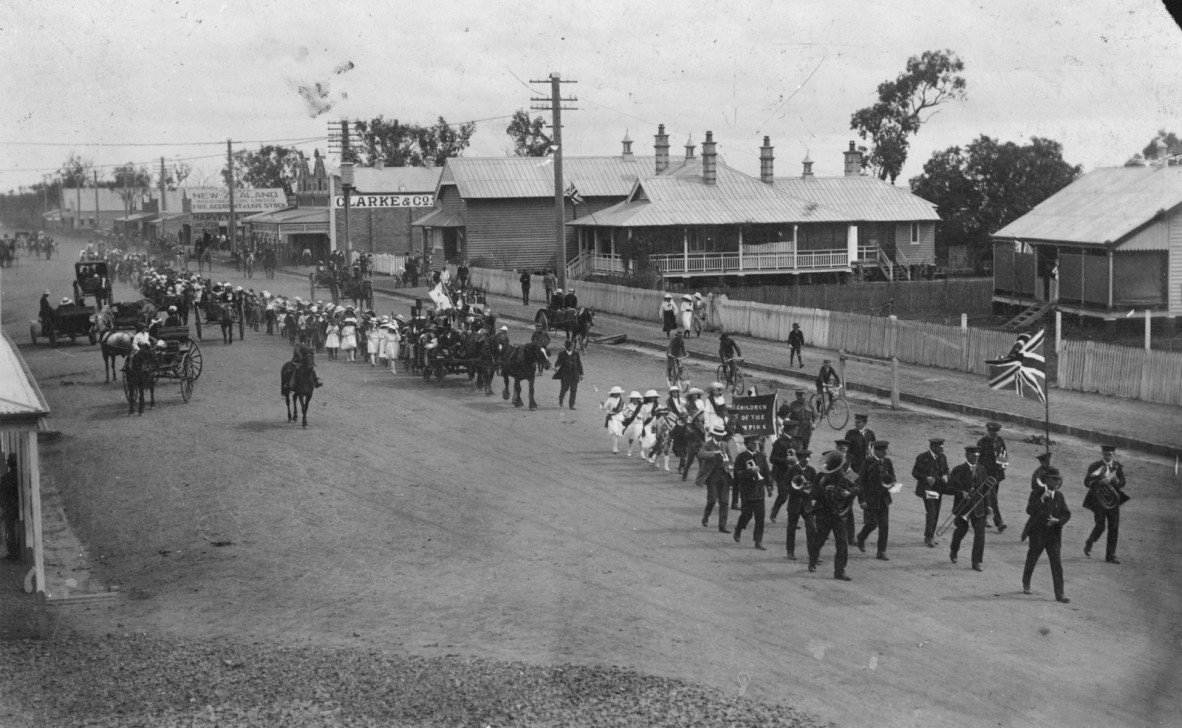
Australia Day Parade in Yandilla Street, Pittsworth, ca. 1915. Negative number 199221, John Oxley Library, State Library of Queensland.
This page, from an official 1957 Australia Day program in the John Oxley Library, describes how Australia Day celebrates “the settlement of the first white men to her shores.” The program also points out that the Queensland chapter of the Australia Day Committee was formed in 1948. The formation of committees across Australia such as the Australia Day Committee coincided with government policies advocating for ‘assimilation’ of newly arrived migrants after the Second World War. The program cover depicts a large watermark of Queen Elizabeth floating above the Brisbane River.
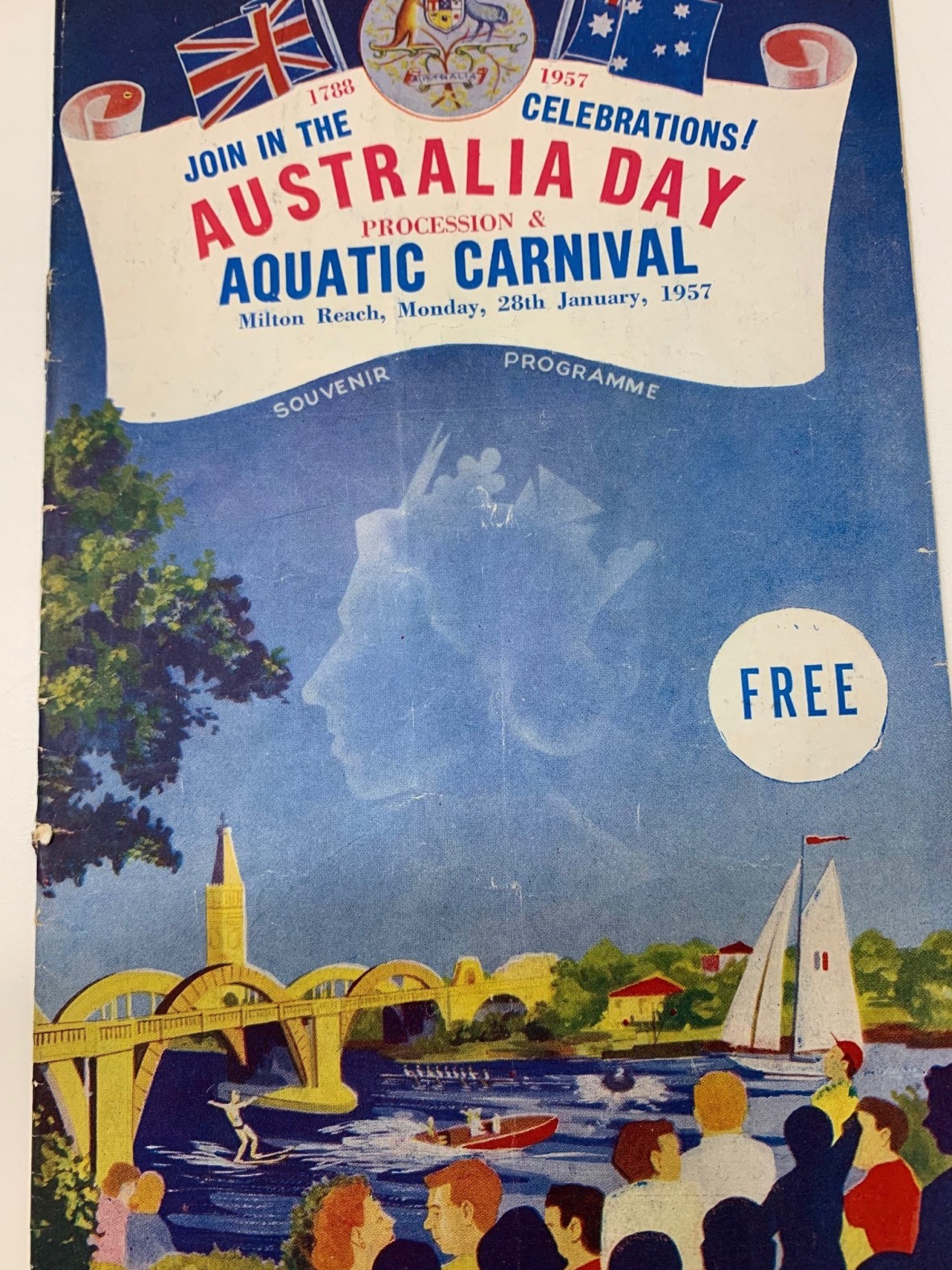
Australia Day Souvenir Programme, 28 January 1957. Australia Day ephemera collection. John Oxley Library, State Library of Queensland
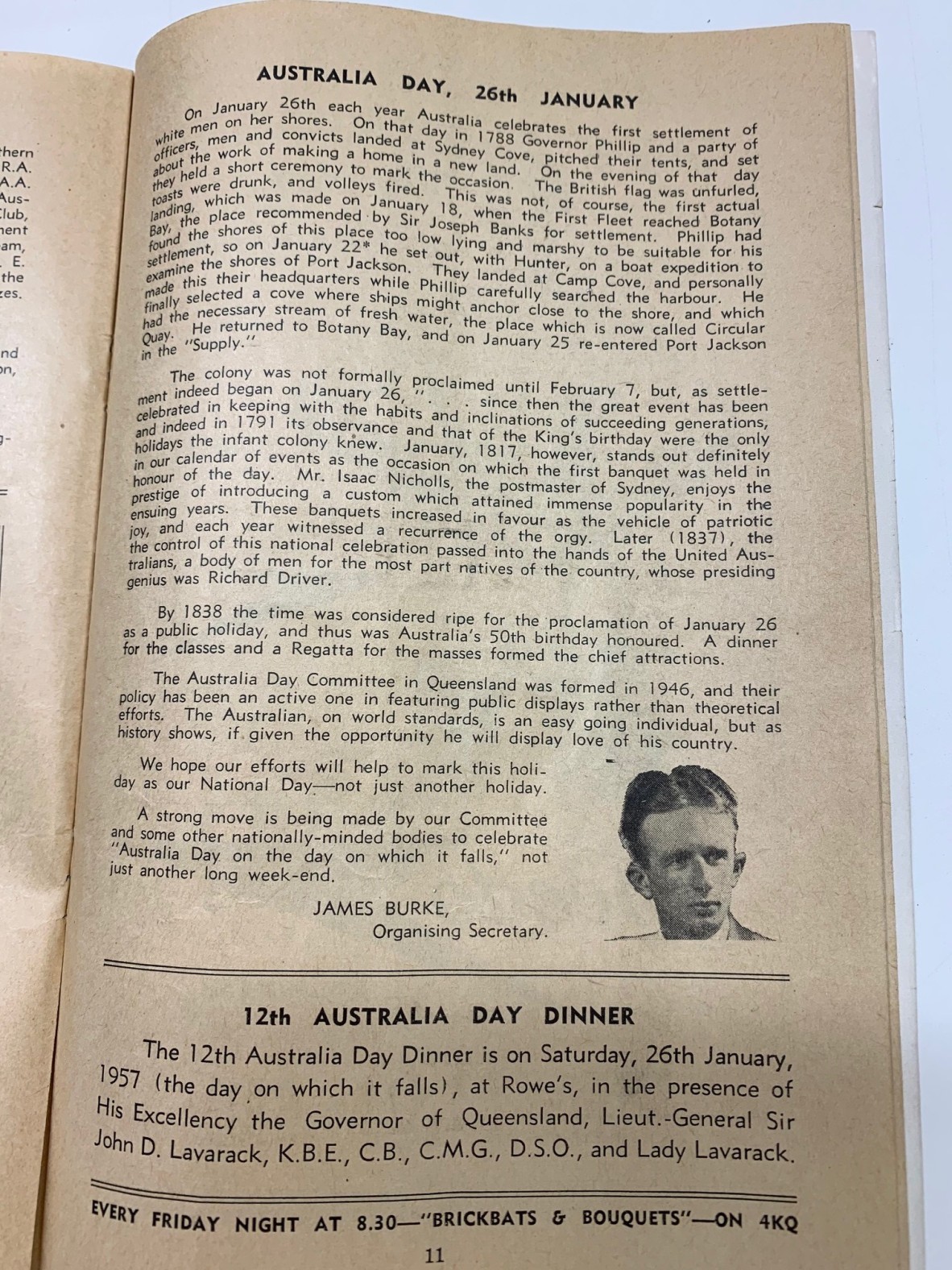
Australia Day Souvenir Programme, 28 January 1957. Australia Day ephemera collection. John Oxley Library, State Library of Queensland.
The later part of the 20th century, in particular 1988 - the Bicentennial year, sees a noticeable change in the way Australia Day was marked across Australia and Queensland. Australia Day in 1988 was years in the making. Queensland’s Bicentennial bulletin, published 1982 – 1988 is a testament to the enormous resources dedicated to making Australia Day 1988 a day to remember. Protests by Aboriginal and Torres Strait Islander people across Australia were the largest ever seen. Photographer Michael Aird was present during these protests. You can see the photographs he took in our collection.
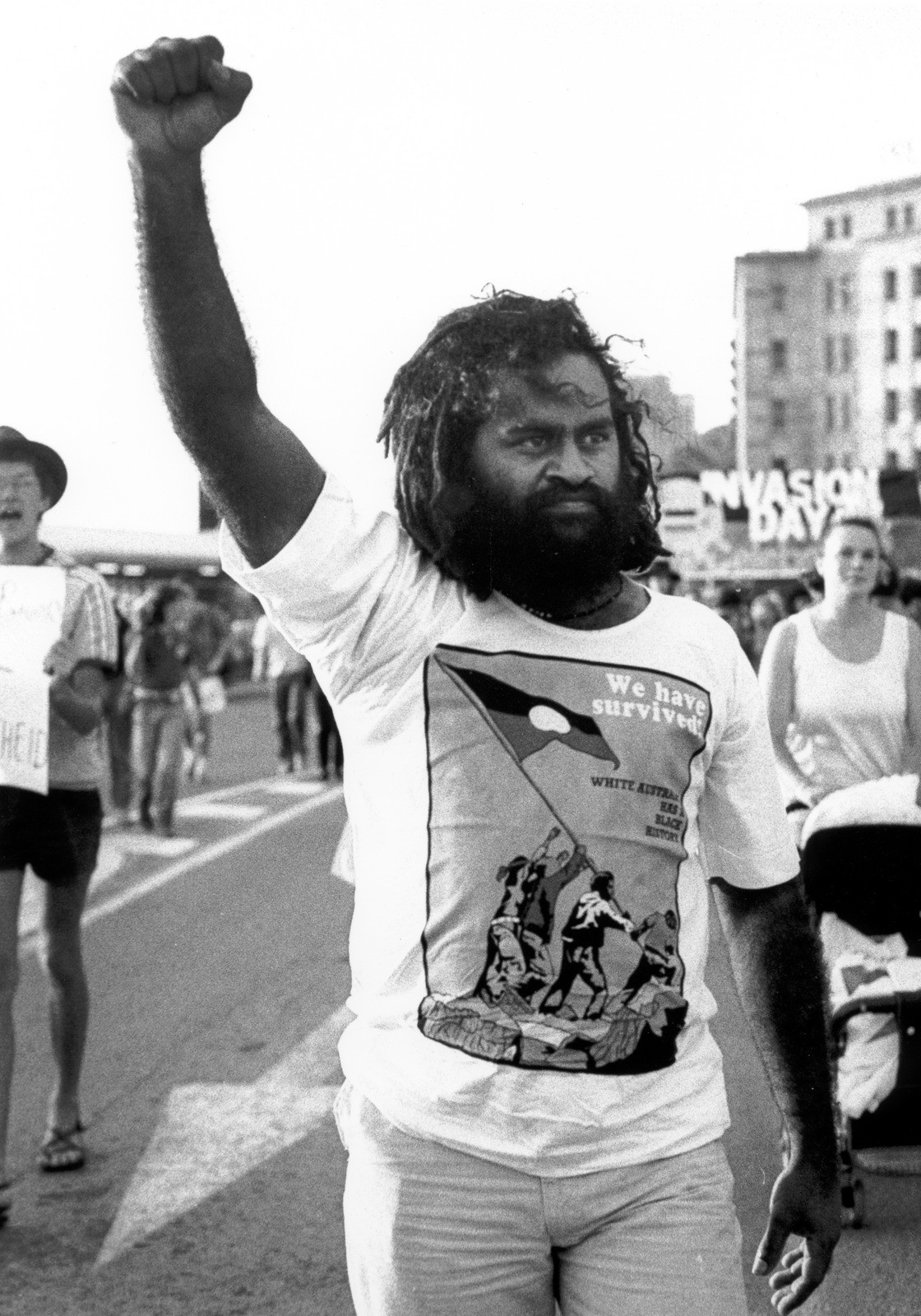
Vincent Brady leading an anti-Bicentenary protest in Brisbane, Queensland, 1987, 30300 Michael Aird Photographs, image number 30300-0001-0067, John Oxley Library, State Library of Queensland.
From the late 20th Century and into the 2000s, Australia Day celebrations have focussed on community run events, family fun and entertainment. Australia Day ephemera in the John Oxley Library includes programs and promotional material from the 1950s through to 2018. Miss Australia competitions, citizenship ceremonies, concerts and cockroach races are featured in brochures, programs, invitations and posters.
Most recently, the grassroots activist group Warriors of the Aboriginal Resistance (WAR) led Invasion Day rallies on 26 January in Brisbane. In the 2000s, thousands of people have marched at Invasion Day rallies in Queensland and around Australia, continuing the annual tradition of protest that began in 1938 with the Day of Mourning. The image below is taken from the 2018 collection photographed by Hamish Cairns.
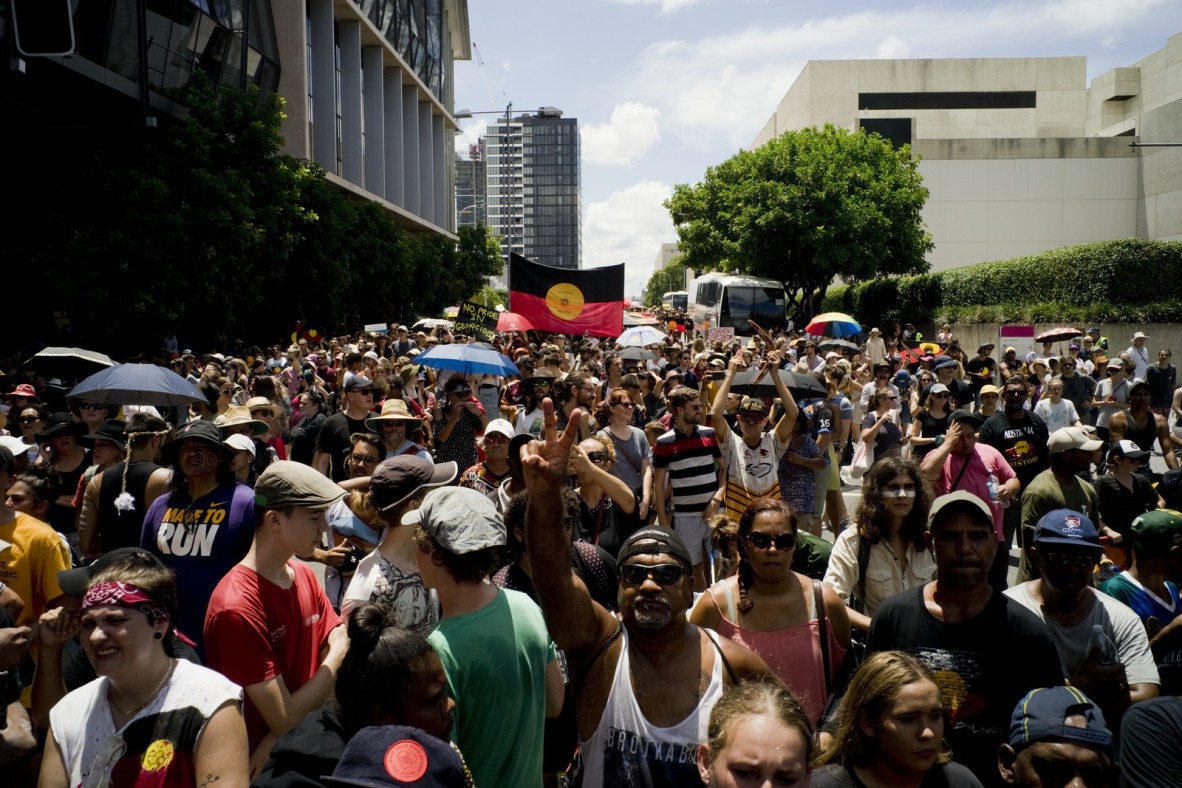
Invasion Day rally 2018 photographs, Hamish Cairns Invasion Day rally 2018 photographs, Image number 31379-0001-0014, John Oxley Library, State Library of Queensland.
State Library collects all of the items displayed in this blog post. If you have brochures, flyers, programs or other memorabilia relating to Australia Day, Invasion Day or any of the other names the 26th January has been known as, you can either post it to
Collection Building team
Queensland Memory
State Library of Queensland
PO Box 3488
South Brisbane QLD 4101
If its digital, you can email us at qldmemory@slq.qld.gov.au.
Comments
Your email address will not be published.
We welcome relevant, respectful comments.
